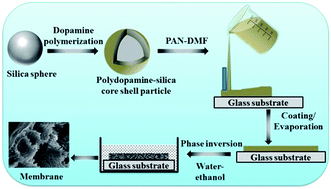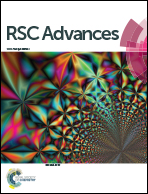Enhanced hydrophilic and antifouling polyacrylonitrile membrane with polydopamine modified silica nanoparticles
Abstract
A simple and straightforward method for preparing hydrophilic and antifouling ultrafiltration membranes is described. Silica nanoparticles were synthesized and modified by mussel inspired dopamine polymerization. The ultrafiltration membranes were prepared using polyacrylonitrile (PAN) with different ratios of polydopamine modified silica nanoparticles (SiO2-DOPA) via a phase inversion process. Composite membranes containing increasing amounts of SiO2-DOPA were compared to the pure PAN membranes to determine the changes in performance, hydrophilicity, and antifouling characteristics. The composite membranes exhibited higher water permeation and rejection properties compared to those of the neat PAN membrane. During flux decline and recovery experiments, PAN–SiO2-DOPA composite membranes exhibited higher flux recovery than a neat PAN membrane. The best performing membrane recovers more than 75% of its original flux after being washed with deionized water, demonstrating a high resistance to irreversible fouling. The composite membranes were tested for rejection of protein and dye molecules, and the high rejection efficiency with moderately declined fluxes indicates their suitability for separation and water treatment applications.


 Please wait while we load your content...
Please wait while we load your content...